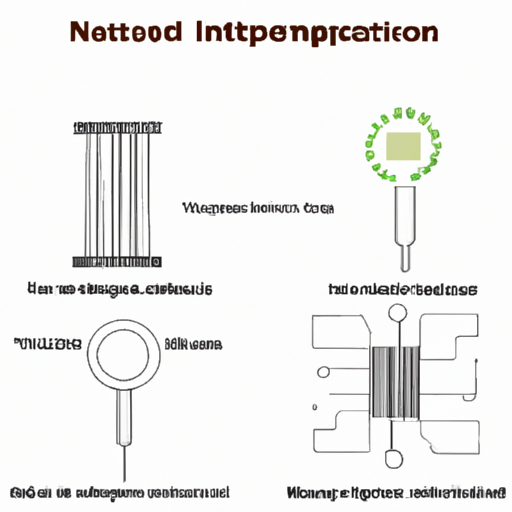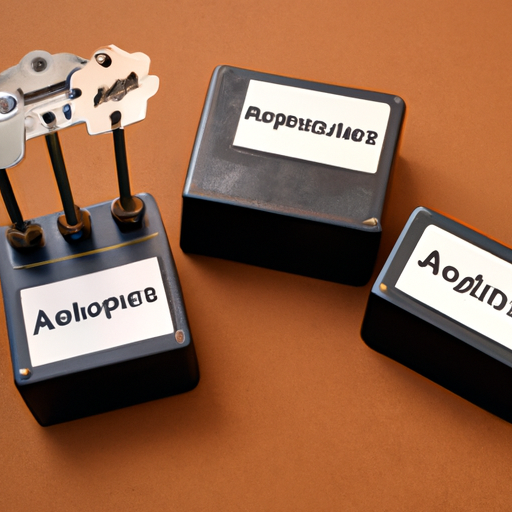
Core Functional Technologies of Multi-Purpose Magnets1. Magnetic Materials Multi-purpose magnets are primarily made from various magnetic materials, each offering distinct advantages:2. Magnetization Techniques The method used to magnetize the materials can greatly influence their performance:3. Coating and Finishing: To enhance the durability and longevity of magnets, they are often coated with protective materials such as nickel, zinc, or epoxy. This prevents corrosion and wear, especially in harsh environments. 4. Design and Form Factor: Multi-purpose magnets come in various shapes (e.g., disc, block, ring, and custom shapes) and sizes, allowing for flexibility in design and application. The choice of form factor can significantly impact the magnet's performance in specific applications.
Application Development Cases1. Consumer Electronics: Multi-purpose magnets are integral to the design of speakers, headphones, and microphones. For example, neodymium magnets are commonly used in high-fidelity audio devices to create powerful magnetic fields that enhance sound quality and efficiency.
2. Automotive Industry: In the automotive sector, magnets are used in electric motors, sensors, and actuators. High-performance magnets are essential in electric vehicle motors, where they contribute to improved efficiency and power output, enabling longer ranges and better performance.
3. Industrial Automation: In robotics and automation, multi-purpose magnets are utilized for holding, lifting, and positioning components. Magnetic grippers, for instance, leverage strong magnets to securely hold metal parts during assembly, enhancing productivity and precision in manufacturing processes.
4. Medical Devices: Magnets play a crucial role in various medical applications, such as MRI machines, where strong magnetic fields are necessary for imaging. Additionally, magnets are used in drug delivery systems and other therapeutic devices, facilitating targeted treatment options.
5. Renewable Energy: In wind turbines and generators, multi-purpose magnets are essential for converting mechanical energy into electrical energy. The efficiency of these systems can be significantly enhanced by using high-performance magnets, which improve energy output and reliability.
6. Home and Office Applications: Everyday items such as refrigerator magnets, magnetic closures for bags, and whiteboard markers utilize multi-purpose magnets. Their versatility allows for innovative designs in consumer products, enhancing functionality and user experience.
ConclusionMulti-purpose magnets are vital components across various industries due to their unique properties and versatility. By understanding the core technologies and applications, developers and engineers can create innovative solutions that leverage the strengths of these materials. From consumer electronics to automotive applications, industrial automation, and medical devices, the effective use of multi-purpose magnets continues to drive advancements and improve efficiencies across multiple sectors.

Application Development in NTC Thermistors for IRF510: Key Technologies and Success StoriesNTC (Negative Temperature Coefficient) thermistors are essential components in temperature sensing and control applications. Their ability to decrease resistance with increasing temperature makes them ideal for various electronic applications, particularly when integrated with power devices like the IRF510, a widely used N-channel MOSFET. This document explores the key technologies and success stories associated with the application development of NTC thermistors in conjunction with the IRF510.
Key Technologies1. Temperature Sensing and Compensation2. Closed-Loop Control Systems3. Overtemperature Protection4. Smart Home and IoT Applications5. Automotive Applications1. Consumer Electronics2. Renewable Energy Systems3. Industrial Automation4. Medical Devices Success Stories ConclusionThe integration of NTC thermistors with IRF510 MOSFETs has demonstrated significant benefits across various industries, including enhanced thermal management, improved efficiency, and increased safety in electronic systems. As technology continues to advance, the synergy between these components will likely play a pivotal role in the development of innovative applications in consumer electronics, automotive systems, renewable energy, and beyond. The ongoing evolution of smart technologies and IoT applications will further drive the demand for reliable temperature sensing and control solutions, solidifying the importance of NTC thermistors in modern electronic design.

Application Development in Power Driver Modules for ECS-F1VE685K: Key Technologies and Success StoriesDeveloping applications for Power Driver Modules (PDMs) such as the ECS-F1VE685K requires a deep understanding of various technologies and methodologies to ensure optimal performance, reliability, and scalability. Below is an overview of key technologies and notable success stories in this domain.
Key Technologies1. Integrated Circuit Design2. Thermal Management3. Control Algorithms4. Simulation and Modeling5. Embedded Systems6. Communication Protocols7. Safety and Reliability Standards1. Electric Vehicle (EV) Applications2. Renewable Energy Systems3. Industrial Automation4. Consumer Electronics5. Smart Grid Solutions Success Stories ConclusionThe development of applications for Power Driver Modules like the ECS-F1VE685K involves a combination of advanced technologies, rigorous testing, and adherence to safety standards. The success stories across various industries underscore the versatility and effectiveness of these modules in enhancing performance, efficiency, and reliability in power management systems. As technology continues to evolve, the role of PDMs in driving innovation in electric vehicles, renewable energy, and industrial automation is expected to expand further, paving the way for more sustainable and efficient solutions.